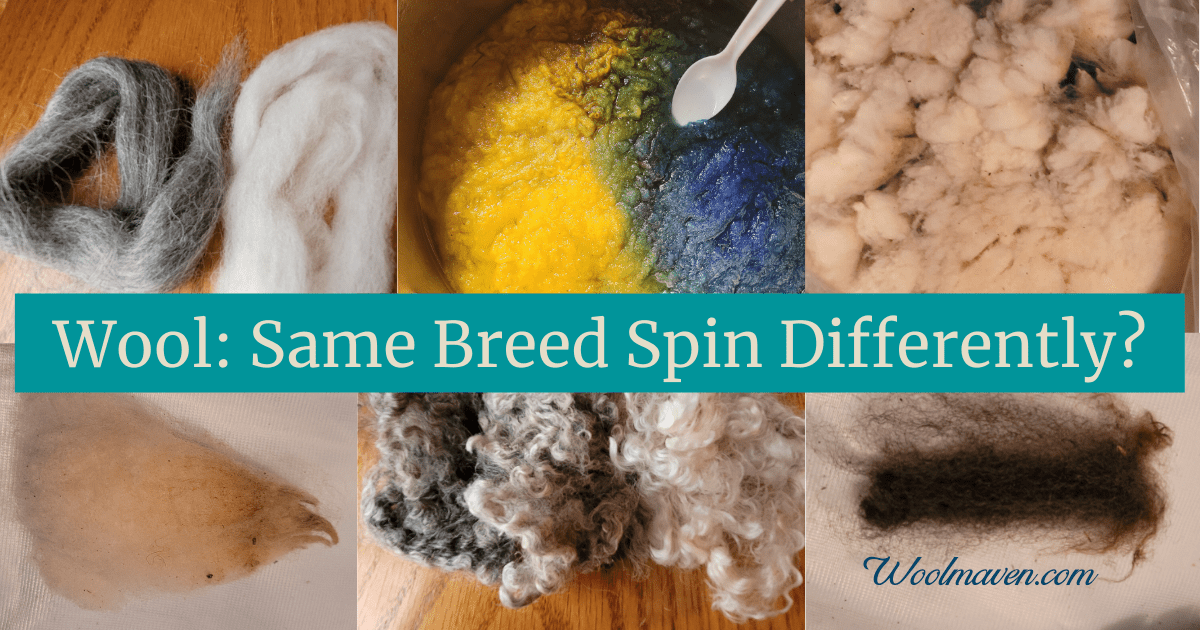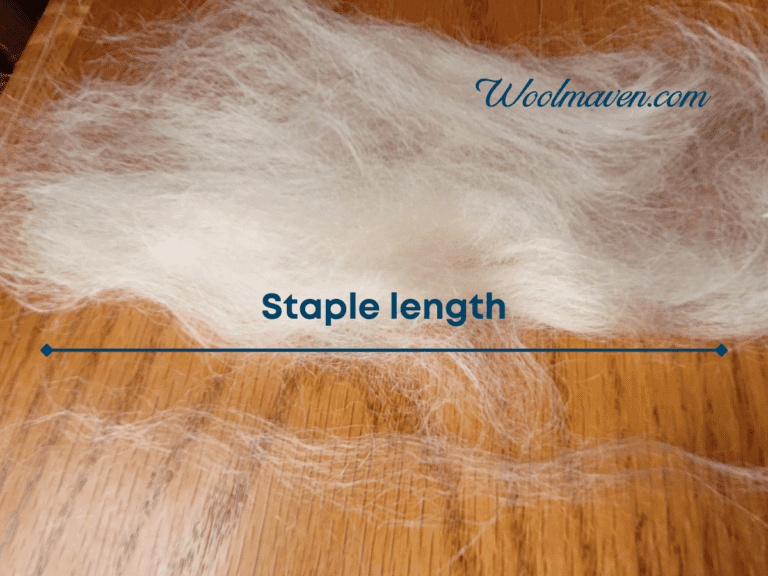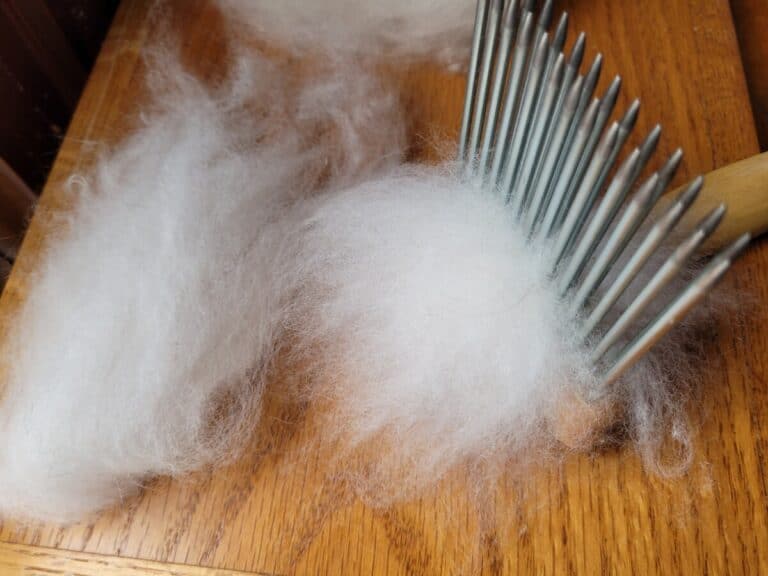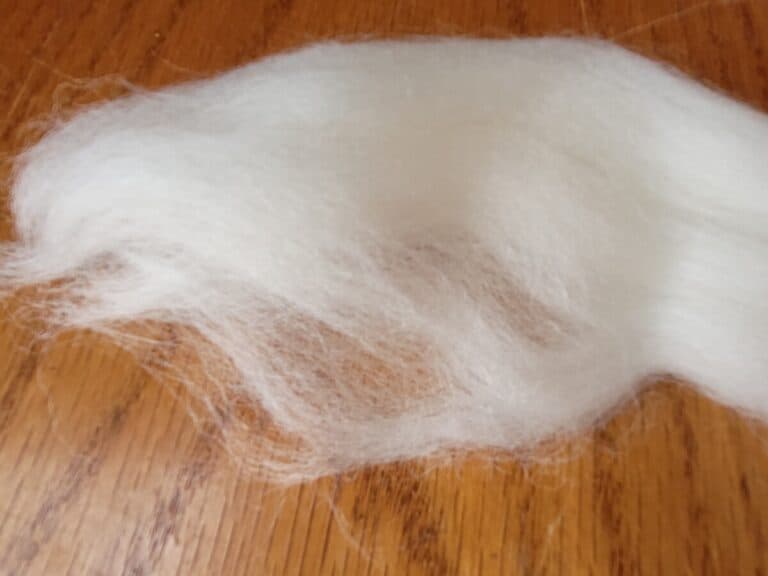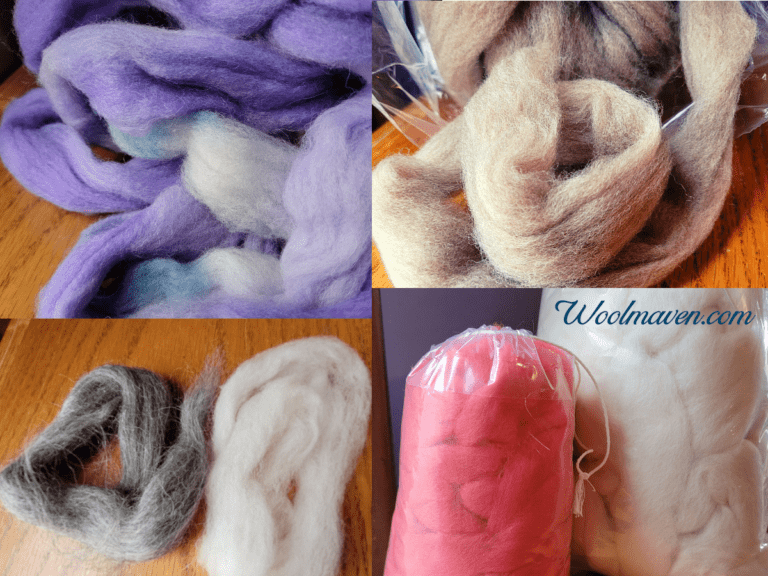Do Fleeces Of The Same Breed Of Sheep Spin Differently?
If you get a fleece from the same breed of sheep you have purchased before, will you get what you are hoping for?
Do fleeces of the same breed of sheep spin up the same or are they different and how do you know what to look for when you are shopping?
Fleeces from the same breed of sheep will be anywhere from slightly to vastly different, depending upon the breed of the sheep, age of the sheep, conditions in which the sheep was kept and uniformity of the wool in the breed, overall.
Since fleeces will differ across the breed, here are some things you can look at to help you sort out your handspinning fleece purchases.
How To Pick A Handspinning Fleece You’ll Love gives you pointers on what to look for when you are picking out the fleece for your next project.
Fleeces from the same breed of sheep spin differently
Different fleeces from sheep of the same breed will spin differently. In my experience, the less well established of a wool breed the sheep are the more variety you will find in the fleeces.
Conversely, the more consistently selected for fiber production the sheep are, the more similar the fleeces will be across the breed.
For instance, a Jacob sheep flock will have a variety of fleeces, in both pattern and microns.
This is a one of the more recently selected for wool traits breeds, meaning they have not been selected for fiber production for all that long, even though Jacob is not a new breed of sheep.
Until recently, Jacob sheep were kept as easy care, multi horned and colorful park or ornamental (not production) sheep, so the genetic variation in the fleeces breed is high.
Compare the Jacob to a classic wool sheep, like the Merino, which has been selected for wool quality, both fineness and staple length, for centuries.
This is why Merino has a more consistent fleece than a Jacob, years and years of selection specifically focused on improving the wool.
Area specific wools may vary
If the wool you plan to work with is really the wool from an area or region rather than a specific breed, the wool may vary noticeably from one batch to the next.
For example, Falkland wool is from a location, the Falkland Islands, where the sheep are not all one breed. They are a mix of Corriedale, Merino and Polwarth, all of which are great wool breeds.
I ordered some Falkland to work with and it’s super, I love it! It reminded me of embroidery floss while I was spinning it, nice!
Knowing that the wool can vary a bit depending on the source flock, I would want all my wool for the project I was working on to come in one batch.
6 Hard To Spin Wools gives you some wool types with characteristics that make them hard to work with for handspinning.
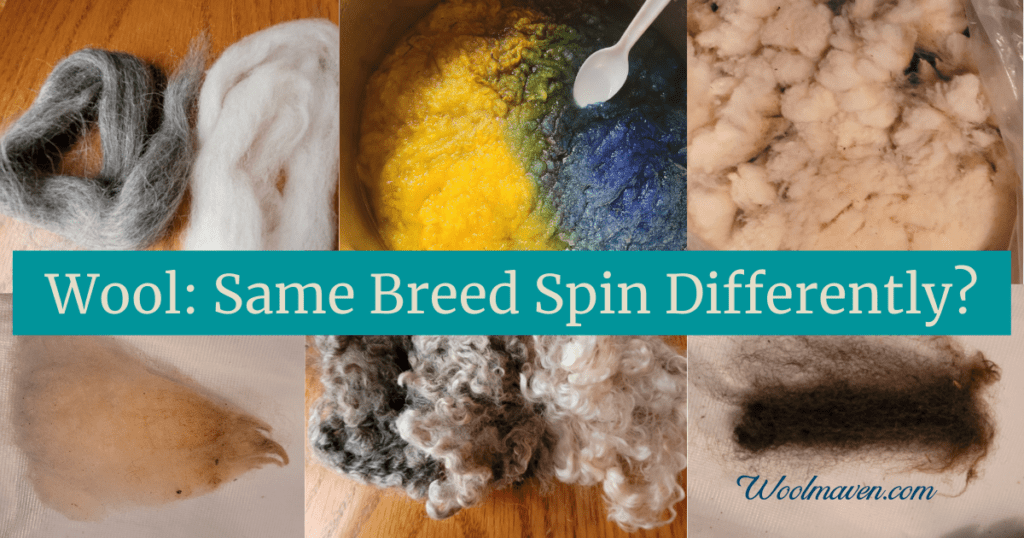
Sections of the fleece on a sheep will vary
The other part of fleece variation is more of an issue when you get part of a fleece, rather than the entire fleece.
In very general terms, wool from lower on the sheep’s body is less desirable than wool from higher on the sheep’s body. So, wool from the back, good, wool from the lower leg, not so good.
Sections of the fleece will vary, so if you get a pound of wool to work with, did it come from the back, sides or breech? Each area will be different.
Well skirted fleeces will have all the unacceptable parts tossed out, but a not so well skirted fleece will have some less desirable sections included.
For instance, I purchased some mohair (I know that is a goat, but it fits well with this section) and there were second cuts, a variety of fiber lengths in one of the fleeces and some stained sections.
This is to be expected since I purchased “as shorn” fleece, not premium locks for lock spinning or doll making, which I would have expected to be perfect and would have paid accordingly.
If you do not want to deal with much variability in your wool, be choosy as to whom you purchase from. Make sure the wool is heavily skirted and that you are buying prime fiber only.
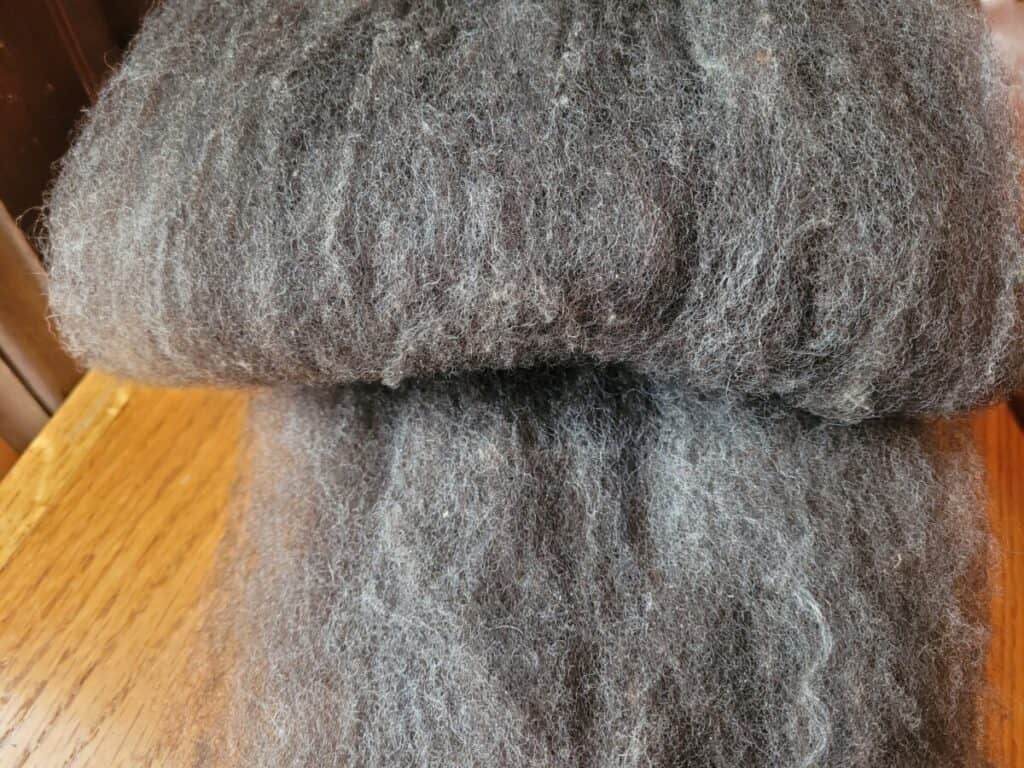
Lamb fleece vs adult fleece
The easiest place to see differences in fleeces within the same breed is to consider the age of the sheep, mainly if the fleece came from a lamb or an adult.
Adult sheep fleeces are going to be anywhere in the normal range of microns and staple length for the breed, no surprise there.
Adult fleece staple length is the fleece growth over a year. Most sheep are shorn one time per year giving the full staple length for the breed in the fleece.
Shearing more frequently than every 12 months will yield a shorter length wool, as would be the case with twice yearly shearing of long wool breeds, which would take a 12 inch staple, for example, down to 2 fleeces of 6 inches in length.
Lamb fleeces are going to be finer, in the vast majority of sheep. Lamb fleeces are also going to be shorter, simply because the fleece has had less time to grow.
I bought a Lincoln lamb fleece a few years ago at a sheep and wool show. Since it was a lamb fleece, it was not too long or overly coarse.
It was a lovely grey color and a wonderful wool to work with! Very spinnable for a beginner and soft enough to wear the results, I tend to make hats if I’m not sure of what to do with the yarn!
Had this been an adult Lincoln fleece, first off it would have had a noticeably longer staple and would have likely been a bit too coarse for me to like it as hat yarn.
For example, if I were to look at a lamb vs adult fleece of a Cheviot, I would expect the adult fleece to be 4-5 inches and the microns to be around 29.
For a lamb fleece, both the length and the microns would be less, how much less depends upon the sheep and when it was shorn.
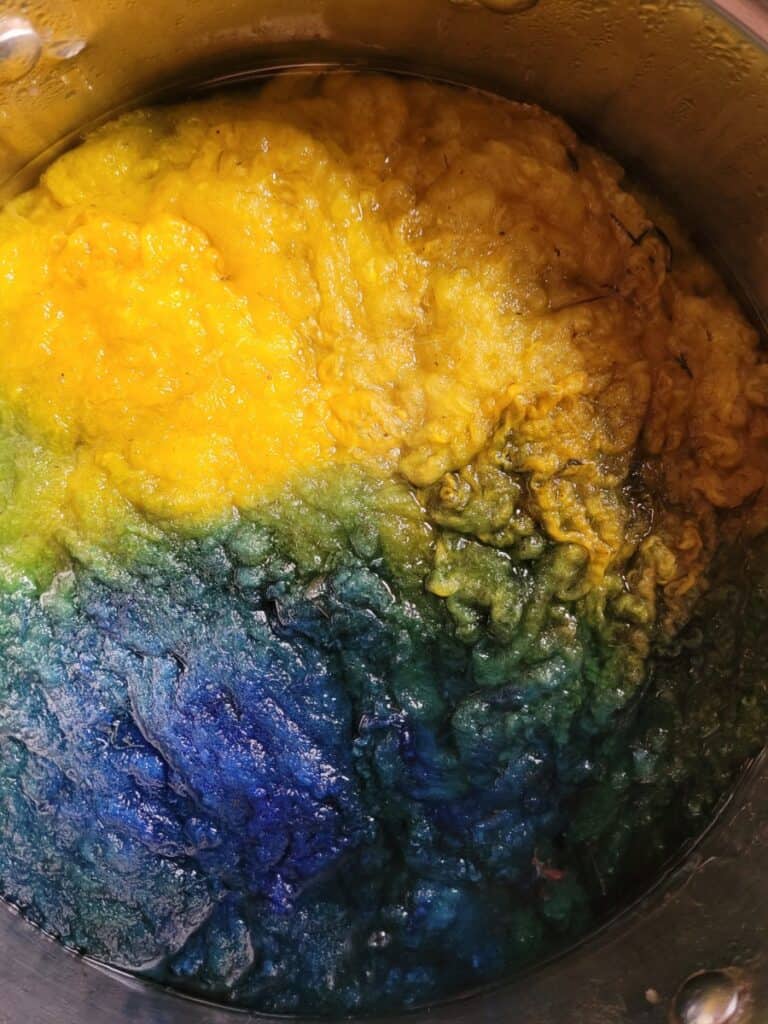
Ram fleece vs ewe fleece
The main difference between ewe and ram fleeces will be size of the fleece, rams are just a bigger animal so they will have a bigger fleece when compared to ewes of the same breed.
To deal with a few myths:
- Ram fleeces do not stink (you’re thinking of an intact male goat)
- Ram fleeces do not necessarily have to be more coarse than a ewe’s fleece
As far as the spinning attributes of the adult fleeces, both can be great and both can be not so great based on genetics for fineness and staple length not based on the sheep being male or female.
A difference that can show up in ram vs ewe fleeces is that there will be a weak spot in the wool due to birth, obviously for ewes only.
Most folks shear close to lambing, so this weak spot is not in the middle of the fiber, it is at the tip.
If you are concerned about the integrity of the fiber, ask about lambing time and the shearing schedule.
For sheep that get shorn twice per year, like the long wool breeds, choose the fleece that is from the second shearing, which will not include lambing time wool growth.
Wether fleeces will be the most consistent
If you want the most consistent fleece available see about getting a fleece from a wether.
A wether is a castrated male that is kept as a wooler (a fiber production animal). Wethers live a low stress life, no breeding or lambing season, so they are more likely to have a strong fiber from end to end.
Most commercial flocks do not have wethers, this would be for rare breeds with high value wool making it worth the feed and care costs to keep a non production sheep for wool only.
Individual variation in genetics and conditions
The first and most obvious answer to variation in fleece is the genetics of the sheep. Even in flock of sheep selected for fiber quality, there will be some that are ideal and others that are not.
If you want a high quality fleece for the breed, be sure to read about the selection procedures of the breeding stock, especially of the ram, for the farm.
Things to look for when selecting a farm to buy spinning wool from:
- Are you reading about selecting for fineness of fiber?
- What about staple length?
- Are they more concerned with color than fineness or length?
- What are the minimum standards that the sheep has to meet to continue to be part of the flock?
- Do they coat the sheep for all or part of the year?
None of these selection criteria are more or less important than the other, it’s more about matching what you are looking for in a spinning fleece to what this breeder is selecting for in the flock.
Field conditions vary, by year and season
If the sheep are kept outside, which most are, then they will also be in the weather. How much weather affects the fleece depends upon the area where the sheep are raised.
Relative consistency of weather is a plus for western or dry area produced fleeces. In my area, Ohio, we get a ton of weather variety, so we also get not so great wool conditions.
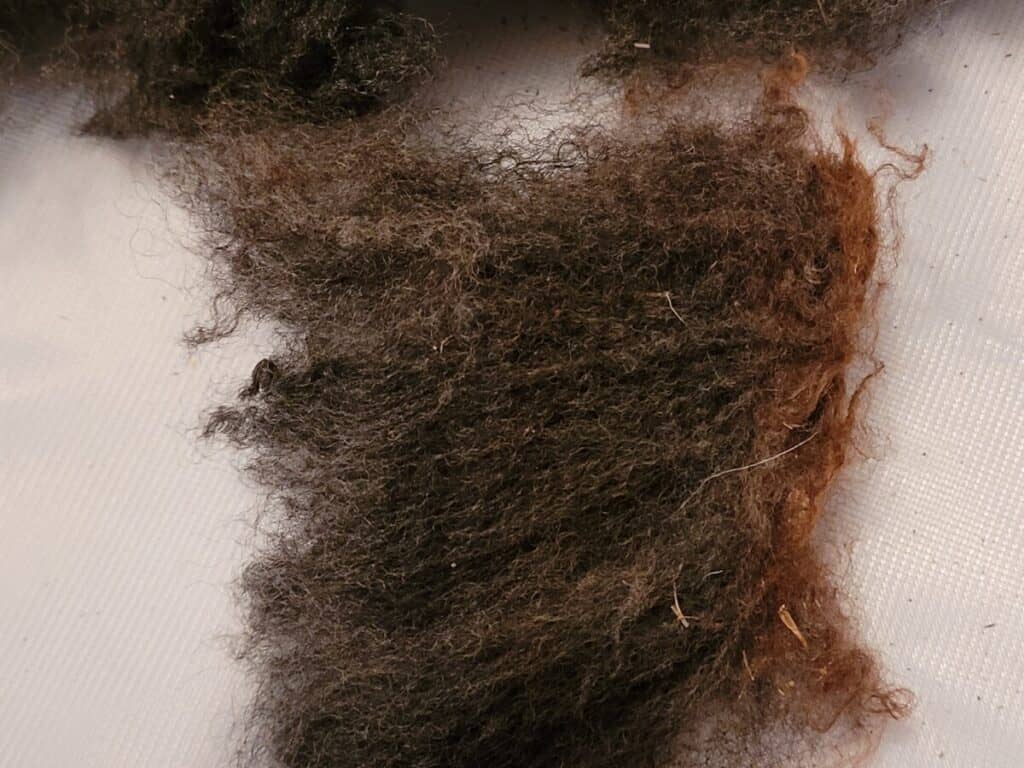
Are the sheep coated?
Some fiber flocks are kept coated, to keep contaminants out of the fleece. Coated sheep look like they have on a jacket or a mini sized horse blanket.
If the sheep are coated, the coat will keep the fleece from getting heavily contaminated with debris, like hay chaff or other VM (vegetable matter), and to keep the tips from sun bleaching.
Coated fleeces should be cleaner than fleeces that are not coated but coats do not solve all fleece challenges, for instance, a coat can cause the tips of the fleece to felt against the coat.
Ask the seller about the fleece
If you are on the fence about whether or not a fleece will work for you and your planned project, ask the seller for an opinion. Sellers want you to be happy with your purchase.
Fiber sellers also know that while every fiber has it’s place, not all fibers work well in all situations.
It’s more about matching up characteristics of the fiber with the needs of the handspinner and the end project. Let the seller help you figure out if the fleeces you like will work for you.
Choosing A Fleece For Processing is an overview of what to look for in your next handspinning fleece by ILikeColours.com, for a different perspective on choosing your fiber.

